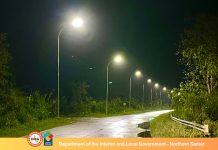
TACLOBAN CITY – Eastern Visayas will have the biggest share of local government units (LGUs) implementing the Department of Social Welfare and Development’s (DSWD) Philippine Community Resilience Project (PCRP) – Panahon ng Pagkilos, a three-year nationwide initiative aimed at strengthening disaster preparedness and reducing poverty through community-driven projects.
Of the 500 municipalities selected across the country, 107 are from Eastern Visayas—the highest number among all regions. The program, carried out under the Kapit-Bisig Laban sa Kahirapan–Comprehensive and Integrated Delivery of Social Services (Kalahi-CIDSS), will run from 2026 to 2028.
Under the scheme, 1st to 3rd class municipalities will receive a P50-million grant with a P10-million local counterpart, while 4th to 6th class municipalities will get a P70-million grant with a P14-million counterpart. LGUs can provide their share in cash or in-kind, with possible projects including flood control, drainage, small-scale irrigation, pre- and post-harvest facilities, and storage facilities.
Local leaders have expressed strong support, highlighting the program’s participatory approach. Matag-ob, Leyte Mayor Bernandino Tacoy said community consultation is key to ensuring projects respond to actual needs. His town has identified seven flood- and landslide-prone villages as potential beneficiaries, with the LGU expected to provide a P14-million counterpart as a 4th class municipality.
“Projects must begin with the people themselves—those directly affected and who will benefit from them. They should be part of identifying and implementing what they truly need,” Tacoy said.
In Jipapad, Eastern Samar, Mayor Benjamin Ver welcomed the project as “timely,” given the town’s constant flooding problem. He said the municipality is likely to propose erosion control measures in riverbank barangays and water system projects to improve resilience.
Jipapad has already benefited from earlier Kalahi-CIDSS programs, with completed projects such as pathways, a health station, community water systems, and farm-to-market roads—evidence of how the “community-driven development” approach empowers people to lift themselves out of poverty.
The PCRP–Panahon ng Pagkilos includes a Community Resilience Implementation Process (CRIP) Roadmap and a Local Counterpart Contribution (LCC) scheme. DSWD has conducted orientation sessions with participating LGUs to ensure effective partnerships and smooth rollout of projects.
(ROEL T. AMAZONA)



